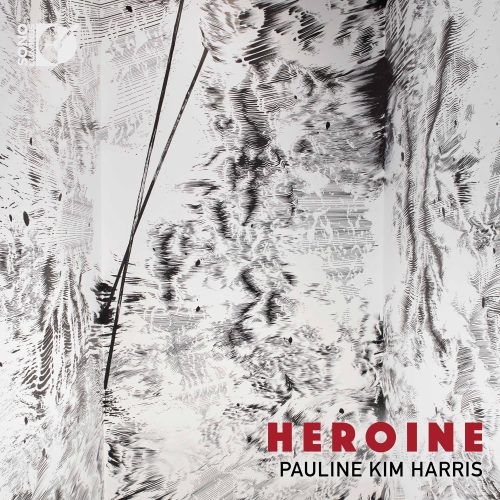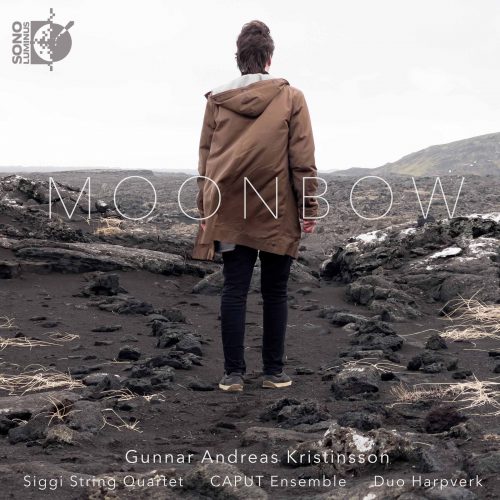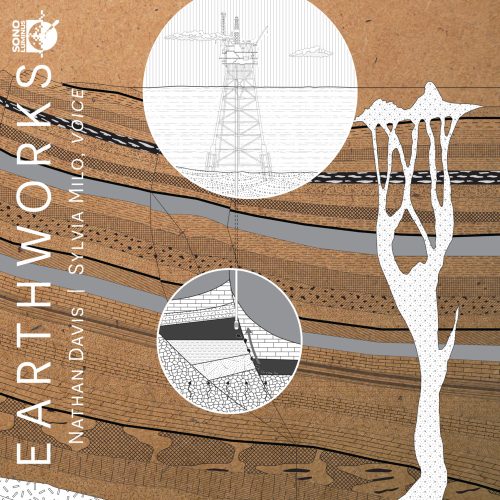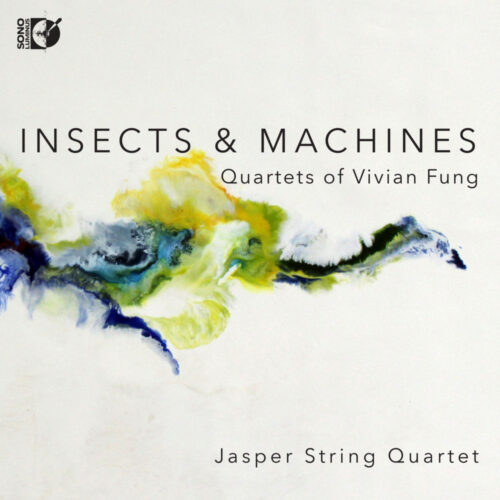“In reimagining the Bach Chaconne and Ockeghem’s Deo Gratias, I searched for meaning and connection to the greater, mysterious universe. My collaborator Spencer Topel, and I created an expansive sonic experience. It is as close to stopping time as I can imagine.” (Pauline Kim Harris)
Ambient Chaconne is an immersive exploration of the J. S. Bach Partita No. 2 in D Minor: IV. Chaconne (BWV 1004). Unfolding over 42 minutes Ambient Chaconne blends live and pre-recorded violin with electronics. Using both human and machine transcription, the Chaconne serves as the structural underpinning to the work, appearing often as small disassociated fragments, and at other times in extremes: consisting of extended passages of sounded or silent materials. As with renditions of the Chaconne by past composers such as Brahms and Busoni, Ambient Chaconne extends the notion of transcription metaphysical, framing the Chaconne both as a musical composition and as a collective-subconscious memory.
Deo is an acoustic-electronic transcription of Johannes Ockeghem’s stunning Deo Gratias devised as a complement to Ambient Chaconne. Notable as a 36-part canon, Ockeghem Ockeghem evokes singing of angels in heaven via an innovation on a traditional canon, using this ancient musical device as a kind of acoustic feedback delay. In essence, our Deo expands this idea of delays to a canon of thousands, in an ever expanding and infinite soundscape, where the melodies eventually dissolve into resonance.
Tracklist
Please note that the below previews are loaded as 44.1 kHz / 16 bit.Total time: 01:11:44
Additional information
| Label | |
|---|---|
| SKU | DSL92235 |
| Qualities | |
| Channels | |
| Artists | |
| Composers | |
| Genres | |
| Speakers | Legacy Audio |
| Recording Type & Bit Rate | DXD |
| Recording Software | Pyramix, Merging Technologies |
| Recording Location | Sono Luminus Studios in Boyce, Virginia on September 20-25, 2018 |
| Recording Engineer | Daniel Shores |
| Producer | Marian Barry |
| Post Production Producers | Daniel Shores, Spencer Topel, and Pauline Kim Harris |
| Mastering Room | Hapi, Merging Technologies |
| Mastering Engineer | Daniel Shores |
| Editing Software | Pyramix, Merging Technologies |
| Digital Converters | Horus, Merging Technologies |
| Original Recording Format | |
| Instruments | |
| Release Date | September 27, 2019 |
Press reviews
AllMusic
Pauline Kim Harris has become a major phenomenon in New York’s avant-garde milieu, and her work has taken her around the world as a virtuoso violinist and collaborator with leading artists and ensembles.
Joining forces with composer and sound designer Spencer Topel, Harris has created two inspiring works for Heroine, a 2019 Sono Luminus release: Ambient Chaconne, a reworking of Johann Sebastian Bach’s Chaconne in D minor, and Deo, another ambient piece, based Johannes Ockeghem’s 36-part canon, Deo Gratias.
These acoustic-electronic arrangements create a transcendent mood, expanding the original material into myriad combinations and resonances that suggest a metaphysical understanding of the potential of ambient music. Harris has dedicated these pieces to loved ones who have suffered in this chaotic and disturbing time, and the soothing nature of her music is intended to heal, rather than challenge or divide.
Ambient Chaconne preserves much of the sonorities and musical shapes of Bach’s original, though over its 42-minute duration, the music evolves and takes on a mystical, expansive feeling that goes beyond a solo violin’s power to convey the infinite.
Deo, with its multiple layers of Ockeghem’s canon treated as a loop of thousands of parts, suggests an angelic choir in all its brightness and beauty.
Both works, with their contrasting hues of darkness and light, give this album a balanced program that will fascinate and move many listeners.
Anearful
This album is some kind of miracle. It was an instant hit in my house, too, assuming the status of a classic with stunning rapidity. The fact that it goes down so easy belies the amount of thought and craft, as well as heart and soul, put into it by Harris, a violinist with wide-ranging interests, and her co-composer, Spencer Topel.
The first of the two pieces is an ambient exploration of the fourth movement of J.S. Bach’s Partita No. 2 in D Minor (BWV 1004). Over more than 40 minutes, Harris and Topel blend live and recorded violin with electronics that at times shimmer and sparkle and at others seem to interrogate the source material. It’s mesmerizing and immersive, with the richness of the experience no doubt aided by Sono Luminus’s exquisite recording. To me, this the ideal use of Bach in the 21st century, especially when it comes to making records.
The second pieces is equally wonderful, even if the source material, Johannes Ockeghem’s Deo Gratias of around 1497, is less familiar. Harris and Topel take the composer’s medieval canon through what feels like a natural evolution into infinity.
One can only imagine what Kubrick would make of this glorious music and what images he would create to accompany it! Just as both Bach and Ockeghem used structural forms to make heavenly music filled with compassion and love, so do Harris and Topel create a sense of warmth and peace out of the application of intellectually rigorous approaches. There’s something healing about Heroine and I recommend listening to it without delay.
Textura
Pauline Kim Harris’s audacious reimaginings of J.S. Bach’s Chaconne (from the Partita No. 2 in D Minor) and Johannes Ockeghem’s Deo Gratias are, it’s safe to say, unlike anything else in Sono Luminus’s catalog and refreshingly so. In place of conventional performances of the original works, on Heroine the violinist and co-composer Spencer Topel have re-created the works as ambient-and-classical hybrids where electronics plays as vital a role as the violin.
Harris and Topel come to such provocative goings-on honestly, she known for work with her husband, FLUX Quartet member Conrad Harris, in the classical avant-punk violin duo String Noise, and he an academic, artist, and designer who blends sound, installation, and architecture in his projects (a recent one saw him and his team developing the first-ever quantum musical synthesizer at The Yale Quantum Institute). Harris has done much to subvert conventional expectations about the classical violinist by performing in museums, churches, nightclubs, and outdoors, and by embracing a spirit of genre openness. The connection between time, memory, and sound plays out in her works, the two pieces on Heroine illustrations. In her own words, the material she and Topel created comes “as close to stopping time as I can imagine.”
Their treatment of Bach’s Chaconne tantalizes in the way it ever so subtly teases out connections to the original. Realized using live and pre-recorded violin with electronics, Ambient Chaconne continually references the Bach composition but does so allusively, resulting in a performance where the original acts as a shadowy phantom. While the Chaconne is present as a structural scaffold, it’s heard as if through a translucent scrim, the definition of its lines blurred by the elements appearing alongside it. In obscuring the original material in such manner, Harris makes it assume the character of a hazy memory that retains a basic shape but without precise detail, and with the tendrils of her violin hinting at Bach without quoting directly, tension permeates the forty-two-minute performance. String phrases intone amidst the glisten, burble, and flicker of electronic sonorities, the mass of sound unfurling slowly and instating an aura of peacefulness and melancholy. In advancing so unhurriedly, the piece convincingly communicates a sense of time-suspension, and though a unified character is established, it’s not static either, with the music shapeshifting subtly through numerous episodes.
As engrossing as the performance of the opening work is, the ambient-drone reimagining of Deo Gratias (ca. 1497) is even more captivating. That’s because Ockeghem’s use of a traditional canon (to evoke the singing of angels in heaven) has been updated by Harris and Topel in their electroacoustic makeover to produce a seeming “canon of thousands,” the result an ethereal, half-hour soundscape that swirls in never-ending motion. Strings sing rapturously to lulling effect, the dense mass convincingly suggesting how the music of heaven might sound. There are moments during Deo where Harris’s violin exudes a rustic, pastoral quality, especially with the high-pitched shimmer of a strings choir behind it. With the volume turned up, the listener could begin to feel engulfed by the music but never happier to be so.
Classical Modern Music Review
Today we savor more of the “old in the new,” the Modern in the early, the re-imagining and aural re-staging of the past into New Music. Today we consider Heroine (Sono Luminous 92235), an Ambient New Music foray into Bach’s Chaconne from the Partita No. 2 in D minor (“Ambient Chaconne”) and Ockeghem’s “Deo Gratias” (“Deo”) for violin and electronics, all composed by Harris and Spencer Topel.
Where these two works go are into a spacey ambient place. Part of the roots are in the old Fripp and Eno classics, part are firmly in the Early Music past, parts just speak directly to me (us) as contemporary cosmicalities.
The violin part is central–sometimes incorporated simultaneously into the electronics haze, sometimes standing apart in a solo-versus-collective “orchestral” backdrop sense. Delay-echo can play a contrapuntal role esp in “Deo” and/or it can embellish the main line.
In the music of “Ambient Chaconne” live and pre-recorded violin join with electronics. The work begins as earlier recompositions of the original Bach work with foundational transcriptions of passages from the original and weaves all of them together in a carpet of ambiance, as “structural underpinnings,” “small, dissociated fragments” and as extremes of “extended passages of sounded or silent materials.” It sounds as simultaneously and linearly a microscopic reconstruction of the inside of the music, ethereal and movingly memorable.
“Deo” takes Johannes Ockeghem’s remarkable 36-part cannon from “Deo Gratias” and extends the contrapuntal nexus to infinite levels so that in the end it becomes a simultaneous burst of musical light most beautiful to hear and behold.
The music comes out of Kim’s profound experience appreciating the tending to afflicted loved ones and experiencing loss in the widest senses from illness, whether physical or via mental illness, depression, or addiction, or from growing distrust and general malaise in a growingly destabilized world. The music sounds to me as an antidote to all the suffering implied in our times and no doubt Harris and Topel mean it as such. It is a kind of tribute to the ministering angels of healing we experience for self or others when the world or our bodies seem at odds with life as we mean it to live, or anyway that is my interpretation of the notes she has penned for us in the liners.
In all and all of it this is music you can grow into and occupy like living room furniture, or so it seems to me. It is not easy-chair ears (as Ives called it) that are developed so much as an organic living reconstruction, an internal dwelling inside fragments and wholes of earlier music as a way of being and hearing. It is delightful, majestic, and cosmic fare. I do recommend it for its spacious girth. Hear-hear!
Only logged in customers who have purchased this product may leave a review.







Reviews
There are no reviews yet.